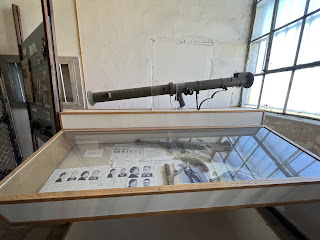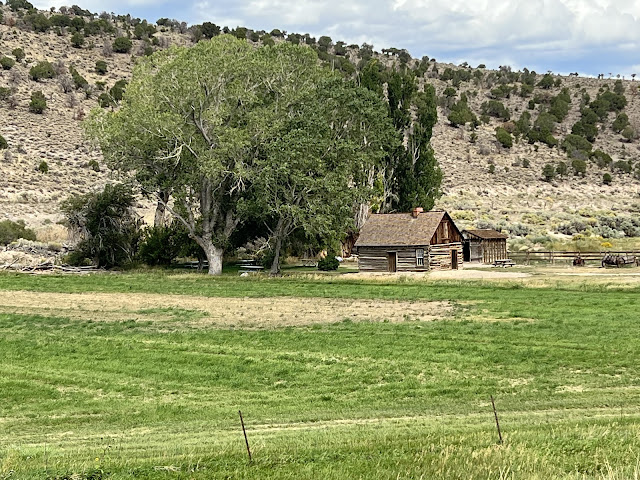Deer Lodge
Gold was discovered near Deer Lodge, MT in 1862. Subsequent area discoveries prompted a gold rush that attracted lots of “characters” - and bad activities. Finally vigilante groups formed to hang or banish those participating in thievery, lawlessness and murder. In late 1866, the Territorial Legislature requested funds from Washington to build a prison; Congress approved the project but provided too little funding. Deer Lodge was picked for the site, but many delays postponed the commencement of construction until 1870; the first prisoner arrived in 1871. In 1893, the annual report mentioned that the old wooden walls which surrounded the prison were in great disrepair, which prompted the decision to build a new wall using stone from a nearby quarry and prison labor, since funding was “unavailable”. (In November of 1889, Montana had become the 41st state, thus the burden of operating the prison fell on the shoulders of the new state government. Inadequate funding and overcrowded conditions plagued this prison for over a century. In 1979, the prison was abandoned for a new facility about 4 miles out of town. The original one is now part of the “Old Montana Prison Museums” complex located on the edge of town in Deer Lodge.)
Two major prison riots occurred here, both of which cost the lives of prison officials. In the 1908 riot, Deputy Warden John Robinson died in the Warden’s office, approximately 15 feet from where Deputy Warden Ted Roth would be slain 51 years later in the riot of 1959.
Here is a picture of weapons confiscated from prisoners over the years. Notice the shoes at the bottom of the picture. These are cement shoes that escape-prone prisoners were forced to wear when being moved outside the confines of their cells. The pair weighed approximately 25 pounds.
Gladys Lightfoot was the first woman on the staff hired to work within the walls. She was asked to work with Social Services in the administration building, isolated from the inmates. But she did work one-on-one with inmates over the years as needed. She treated them well, and they liked her. An inmate trustee who worked the administration offices once told her that if an inmate ever asked her to leave the prison, that she must leave the prison immediately and not ask questions. About a month later, she was given this instruction by an inmate. She left immediately; shortly thereafter the 1959 riot commenced.
Another interesting item - this prison held a number of men who openly spoke out about their objections to US involvement in World War l. A number were imprisoned for years after conviction for “sedition” based solely on the things that they SAID, not for anything that they did.
A couple of wealthy local businessmen have made their own contributions to form local museum enterprises. The first is the owner of the very substantial sawmill operation on the edge of town. He has collected many antique, and not so antique, cars and trucks to form the Montana Auto Museum next door to the old prison.
The second man belongs to the family that founded and has owned the local bank for several generations. His family members have collected “old west” items including cowboy, Indian and cavalry memorabilia. This collection has become the Frontier Montana Museum across the street from the prison and car museums.
George Armstrong Custer family artifacts.
Next, heading further south in Utah.

































Comments
Post a Comment